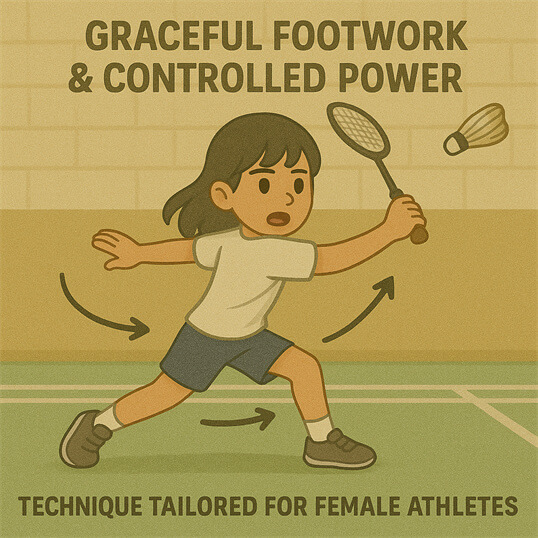Welcome to ST Badminton Academy’s badminton training in Malaysia! If you’re a serious badminton player, then the dreaded plateau is something that you’ve most likely experienced. It can be really frustrating to put in all the hard work and dedication and not make any real progress toward your goals. But don’t worry! There are strategies out there that can help you break through those plateaus so you can reach your training goals. In this article, I’ll share my top strategies for overcoming plateaus in badminton training, so stick around if you want to learn more!
Varying Your Training Routine
As a badminton training expert, I’m often asked how to break through plateaus. The truth is that there’s no one-size-fits-all answer – it depends on the individual athlete and what they need to reach their full potential. However, there are certain strategies that can help.
One of the most important things you can do when facing a plateau in your badminton training is to change up your routine. This doesn’t necessarily mean changing drills or techniques; rather, it involves varying the pace of your practice sessions and focusing on different aspects of the game each day. For example, if you’ve been working on improving your footwork for several weeks, take a few days off from that and focus instead on refining your strokes or mental strategy.
By challenging yourself differently each time you hit the court, you’ll be able to push past any plateaus more quickly.
Mental focus is also key during this process: don’t just go through the motions mechanically – really commit to giving every session 100% effort so that you’re continually pushing yourself further than before. Focusing intensely will not only aid with skill improvement but also help increase self-confidence which will come in handy during competitions against opponents who may have better technique than yours. It’s essential to stay focused and motivated throughout difficult practices so that all of those hours spent honing your skills pay off in the long run!
Incorporating Cross Training
It was almost unbelievable how quickly I had hit a plateau in my badminton training. After weeks of relentless practice and dedication, it seemed like every improvement or breakthrough that I made was short-lived.
I soon found out that the best way to overcome plateaus is by varying your training routine. By introducing some new drills and changing up the intensity or duration of workouts can make all the difference. But what if you’ve already done this? What else could be done to get back on track?
The answer lies in incorporating cross training into your regime. Taking part in alternative sports such as running, swimming or even cycling can help build strength for badminton while also providing mental relief from being stuck in a rut with the same old drills.
Additionally, developing your mental training skills through activities such as meditation or yoga can not only improve focus but provide an opportunity to assess any underlying issues preventing further progress. With these strategies combined, reaching those goals which once seemed so far away will become achievable again.
Setting Small Achievable Goals
When it comes to tackling obstacles on the badminton court, setting small achievable goals is key. It’s easy to get overwhelmed by big aspirations, but focusing on smaller steps can ensure progress and ultimately help you reach your larger goal. I’ve found that visualization plays an important role in this process as well. Visualizing success allows players to see their own potential which helps them stay motivated and take a proactive approach towards achieving their objectives.
One of my favorite strategies for overcoming plateaus is breaking down long-term goals into short-term ones. This helps keep players focused on solving problems one step at a time rather than getting discouraged by the bigger picture. Additionally, having weekly or monthly milestones is great for tracking progress and keeping morale high during training sessions. Celebrating these mini-victories along the way will also help motivate athletes to continue striving towards excellence.
Rest and recovery are essential components of any good training plan, so it’s important to incorporate both into your routine when looking to break through plateaus. Taking regular breaks throughout practice sessions gives players much-needed mental clarity while allowing muscles adequate rest before pushing them again in subsequent drills. Properly utilizing rest periods prevents soreness and injuries while allowing athletes to bring maximum focus and intensity each day they’re on the court!
Utilizing Rest And Recovery
Having outlined the importance of setting small achievable goals, it’s also important to understand the rest and recovery elements for badminton training. This is a crucial part of any athlete’s development, as it helps them reach their peak performance level. Rest and recovery can make or break an athlete’s progress, so it should never be neglected.
My first recommendation would be to focus on improving nutrition when dealing with plateaus in badminton training. Eating healthy meals that are well-balanced will help provide your body with the proper nutrients needed for enhancing both physical and mental abilities during practice sessions. Additionally, focusing mindfully before each session will enable you to create an action plan which will maximize your efforts while training. It is essential that athletes remain focused on their goals despite any external distractions they may experience throughout their journey.
The combination of improved nutrition and mindful concentration has been known to give athletes an undeniable edge over their competition. These two components work synergistically; improving nutrition gives the body energy and stamina for extended practices, while mindful concentration allows athletes to maintain attention during those long hours on the court honing their technique. With this balancing act mastered, athletes can now push themselves further than ever before toward achieving success in badminton training.
Working With A Coach
Working with a coach is an important step to take when trying to break through plateaus in badminton training. There are some very specific strategies that can be employed when taking this route, and it’s essential to make sure you have access to the right resources before hiring a trainer. Here are five key points to consider when finding the best badminton coaching option:
Certainly! Here’s the information formatted into a table:
| Considerations for Finding the Best Badminton Coach | Points to Consider |
|---|---|
| Hiring Trainer | – Find a coach with extensive experience in badminton, knowledge of proper technique, and effective strategies. Research potential trainers, speak to their clients for feedback, and ask for references. |
| Finding Court | – Locate a suitable court for joint practice with your trainer. Ensure the space is spacious, well-lit, and equipped with amenities like music systems or courtside seating. Try different locations before deciding. |
| Observation Skills | – A good coach should possess excellent observation skills to identify weaknesses in technique. Effective communication is crucial for clear explanations during lessons and demonstrations. |
| Scheduling Flexibility | – Look for a coach who understands the unpredictability of life. Opt for trainers with flexible scheduling options, accommodating your availability, and allowing rescheduling in case of unexpected commitments. |
| Affordability | – While prioritizing quality, consider coaches within your budget range. Find a balance between top-notch instruction and affordability to ensure that coaching doesn’t strain your finances. |
By implementing these strategies into your search process, you’ll be able to locate an experienced coach that fits all of these criteria and more importantly help you move forward in overcoming plateaus in badminton training. With the right guidance from an expert, tracking progress over time becomes much easier – setting realistic goals along the way makes it even simpler!
Tracking Your Progress
When it comes to overcoming plateaus in badminton training, working with a coach is only the first step. The second crucial element of success involves tracking your progress. By closely monitoring your performance and implementing tailored programs that are specifically suited for your needs, you can make sure you get the most out of every practice session.
To track progress effectively, there are several tools available on the market today that allow players to compare their current performance against past successes and failures. For instance, by using an accelerometer-based device, like a racket sensor or wrist tracker, athletes can measure power output over time. Additionally, these devices also provide real-time feedback about stroke speed and rhythm which can be used to identify areas where meaningful improvements can be made. Other than choosing a good racket and also remember to choose the best racket restring in Malaysia.
In order to stay motivated and continue improving as a badminton player one must remain organized and focused during each practice session. Having access to tailored programs designed around personal goals makes this much easier. Athletes should use these resources alongside their own data analysis so they can understand how far they’ve come and what lies ahead depending upon how hard they work towards achieving their objectives.
To change up your environment and create new challenges for yourself try joining tournaments or getting involved with local leagues — this will not only help sharpen skills but also give you a sense of accomplishment when results start coming in!
Changing Your Environment
Breaking through plateaus in badminton training can be an incredibly frustrating process. Many players find themselves stuck on the same level for weeks or months at a time, unable to make any substantial progress. There are some strategies that can help you break through these plateaus and keep pushing your game forward.
The first strategy is to change your environment. This could mean playing with different partners than usual, trying out new courts or gyms, or even taking a vacation from badminton altogether. Changing where and who you train with, it will force you to think differently about how you play and what strategies work best for you. It also gives you a chance to reset both mentally and physically after long stretches of intense training sessions.
Another important factor is focusing internally rather than externally when it comes to motivation. While external sources such as coaches, teammates, and other competitors might provide helpful advice or feedback, ultimately the responsibility lies with yourself to stay motivated and push past the plateau. Additionally, tracking fatigue levels during practice is essential so that overtraining does not occur – this way you’ll have enough energy stored up for those big breakthrough moments!
By making small changes within your own control while remaining mindful of your physical limits, you can take back ownership of your badminton training and start seeing results again. With dedication and resilience combined with these tips in mind, there’s nothing stopping anyone from getting back on track towards success!
Refocusing Your Motivation
One of the biggest challenges when it comes to badminton training is overcoming plateaus. When your progress starts to stagnate, it can be disheartening and make you feel like giving up. But don’t despair – there are strategies that can help you keep going and reach new heights in your game. Refocusing your motivation is a great place to start.
When faced with a plateau, take some time out to reassess what inspired you to pick up the sport in the first place. Maybe it was an admiration for professional players or the challenge of mastering complex techniques. Focus on this inspiration and find ways to reignite those feelings again. Remind yourself why badminton matters so much to you, how far you’ve come already, and how close you are to achieving all that success.
Visualizing your goals also helps stay motivated during tough times. Think about where you want to go as a player: What level do you want to achieve? How will reaching these goals improve your life? Fostering positive energy towards these visions gives us strength and resilience for whatever obstacles may stand in our way – mental blocks included! So embrace any setback as an opportunity for growth rather than dwelling on them and soon enough those roadblocks won’t seem so daunting anymore.
Frequently Asked Questions

How Often Should I Vary My Training Routine?
When it comes to badminton training, varying your routine is key! It’s important that you make sure to mix in drill specifics and game strategies – alternating between the two will ensure that you’re giving yourself a well-rounded workout. Doing this every few weeks can help break plateaus and keep your training fresh. So don’t be afraid to try something new, and challenge yourself with different exercises each time!
What Types Of Cross Training Can I Incorporate?
Cross-training is a great way to break up the monotony of badminton training and help you overcome plateaus. Incorporating cross stretching, cardio workouts such as swimming or running, and nutrition planning are all important for maintaining your physical conditioning when playing badminton.
Cross-stretching helps improve flexibility in muscles that don’t get used during regular practice sessions. Cardio exercises increase endurance levels so you can last longer on the court. And proper nutrition will ensure you’ve got enough energy to keep going during long matches. As a badminton expert, I highly recommend incorporating these elements into your routine if you’re looking to take your game to the next level!
How Can I Ensure I Am Setting Realistic Goals?
If you want to ensure that your badminton training is effective, setting realistic goals is key. You should focus on tracking progress and performance metrics while also creating challenges for yourself. Additionally, set milestones and deadlines so that you can stay motivated towards reaching them. Feedback from coaches or other players will help refine technique as well as provide valuable insight into areas where improvement can be made – use it to reach the next level!
How Much Rest And Recovery Should I Be Taking?
When it comes to badminton training, rest and recovery is essential for maintaining peak physical performance. Taking a day off or two, as well as engaging in skill drills without putting too much strain on the body can help athletes avoid mental fatigue while still getting better at their sport. It’s important to remember that consistent practice and having realistic goals are also key components of success – don’t be afraid to take some time off every now and then!
How Can I Find An Experienced Coach?
Finding an experienced coach can be a great way to break through plateaus in badminton training. Look for mentors who are highly qualified, have years of experience and specialize in the area you need help with.
They’ll be able to provide skill drills and personalized advice that will take your game to the next level. It’s also important to find someone who is available regularly so you can get feedback on your progress and make sure you’re staying on track with your goals. With the right mentor, you’ll finally overcome those pesky plateaus!
Find A Experienced Badminton Coach in Malaysia
Training plateaus can be frustrating and discouraging, but with the right strategies, you can break through any plateau. With a bit of creativity in your training routine – like incorporating cross-training activities – and setting realistic goals tailored to you, you will soon find yourself back on track.
Remember that rest and recovery are also essential when it comes to long-term success. If you need help along the way, don’t hesitate to enlist an experienced coach who can offer personalized advice and guidance to get you over the hump! With these tips in hand, take control of your badminton training journey—you have what it takes to reach new heights!





